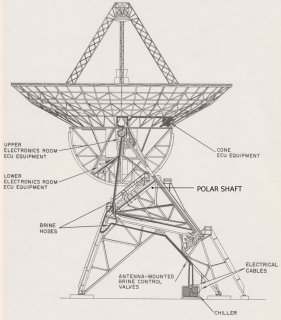
Left click on image for large version.
Schematic diagram of an antenna similar to the HartRAO 26m telescope,
showing the polar shaft (NASA). The failed bearing was at the upper end of
the polar shaft.
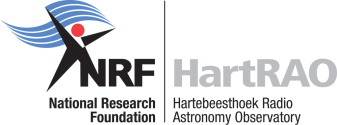
HartRAO Home > news > HartRAO 26m Telescope repair 2010-09-06
Prime contractors for the repair were General Dynamics Satcom Technologies in the United States. Local contractors were Stratosat Datacom, and the local engineering subcontractor was Tass Engineering.

Left click on image for large version.
Schematic diagram of an antenna similar to the HartRAO 26m telescope,
showing the polar shaft (NASA). The failed bearing was at the upper end of
the polar shaft.
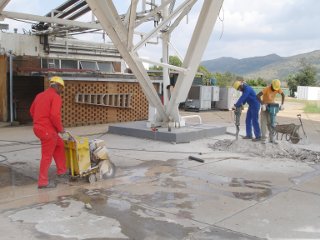
Left click on image for large version.
2010-03-09 Cutting the concrete slab and removing the old airconditioning chiller foundation in
preparation for casting the concrete supports for the box beam and A-frame that will hold up
the 200 tonne telescope during the bearing replacement
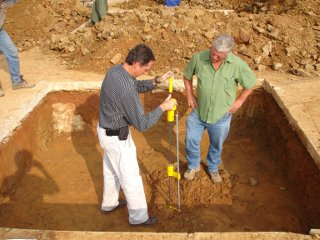
Left click on image for large version.
2010-04-09 Testing the soil hardness to ensure it will properly support 200 tonnes.
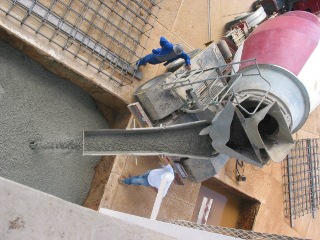
Left click on image for large version.
2010-04-19 Pouring concrete
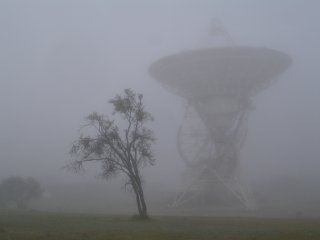
Left click on image for large version.
2010-05-14 Concrete curing in the mist
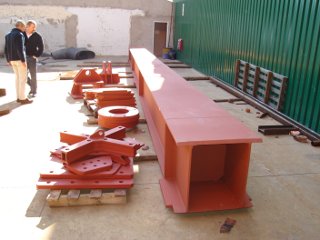
Left click on image for large version.
2010-05-26 Box girder parts constructed at Tass Engineering. The large box
beam will support an A-frame (bipod) that will be attached to the polar
shaft just behind the failed bearing.
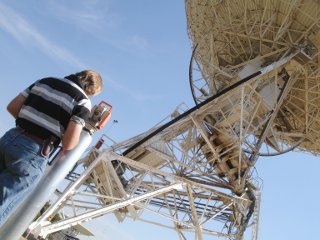
Left click on image for large version.
2010-05-27 HartRAO Associate Director for Space Geodesy Ludwig Combrinck
surveying the 26m polar shaft before work begins,
to determine its shift during the repair
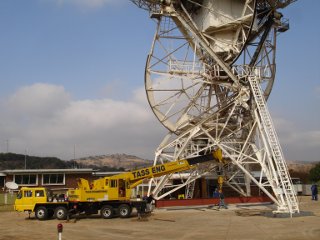
Left click on image for large version.
2010-06-10 Placing the box beam on the concrete pads
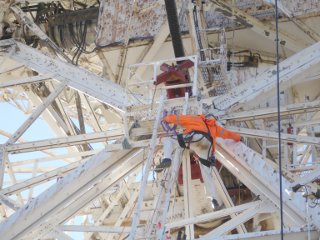
Left click on image for large version.
2010-06-15 The red polar shaft end cap puller is in place. The bearing is
behind the end cap. Spot the person in the structure!
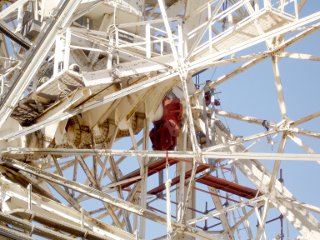
Left click on image for large version.
2010-06-18 Polar shaft collar and A-frame top pivot
have been installed on the polar shaft just behind the bearing.
Viewed from the west side.
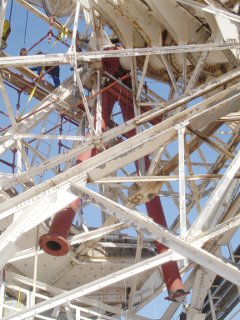
Left click on image for large version.
2010-06-22 The A-frame upper legs have been installed.
At this stage the two upper legs hang from the collar
around the polar shaft.
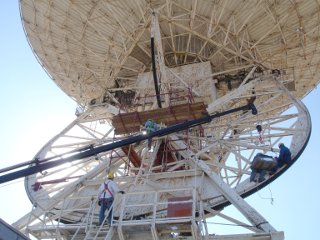
Left click on image for large version.
2010-06-23 The large gear wheel for driving East-West Hour had to be braced
with temporary struts to prevent it moving during the repair
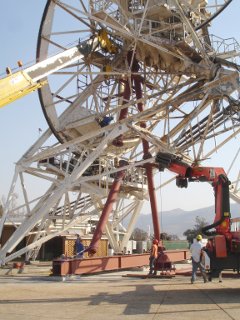
Left click on image for large version.
2010-06-24 Lifting the lower East A-frame leg into position. The lower West
leg is already in place.
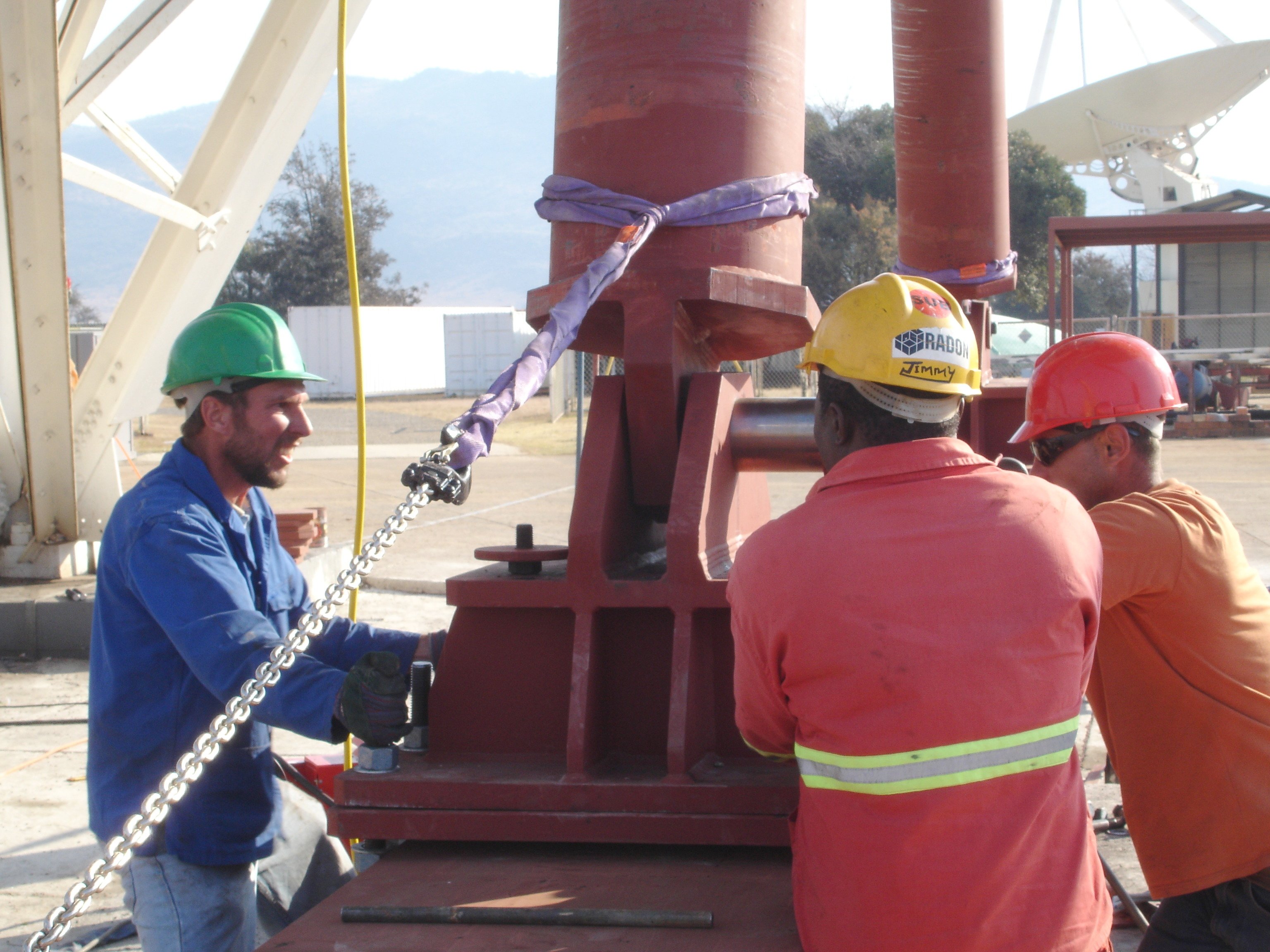
Left click on image for large version.
2010-06-24 Inserting the pivot pin in the East A-frame leg to lock it in place
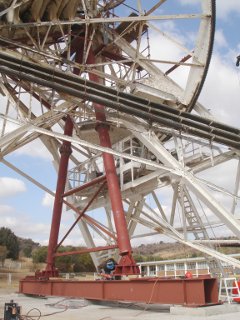
Left click on image for large version.
2010-06-28 Working on the A-frame
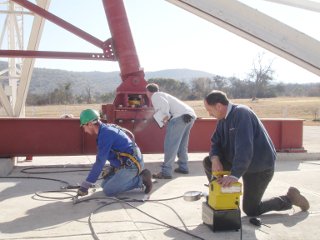
Left click on image for large version.
2010-06-30 First lift of the East A-frame leg using a 200 tonne hydraulic
jack. The polar shaft had sagged as the bearing failed, and had to be moved
back into the correct position to replace the bearing.
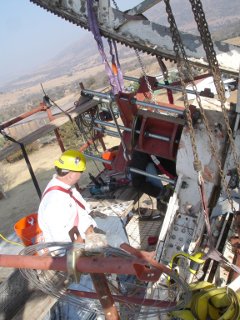
Left click on image for large version.
2010-07-01 The red puller is in place for removing the end cap. The bolts
holding the splice plates between the end cap and support legs are being
removed. The 200 tonne antenna is now supported on the A-frame.
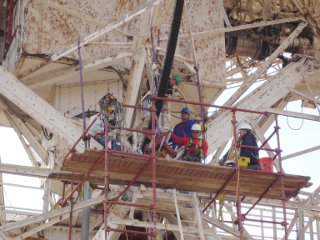
Left click on image for large version.
2010-07-01 Bearing cover removal with jack inside puller
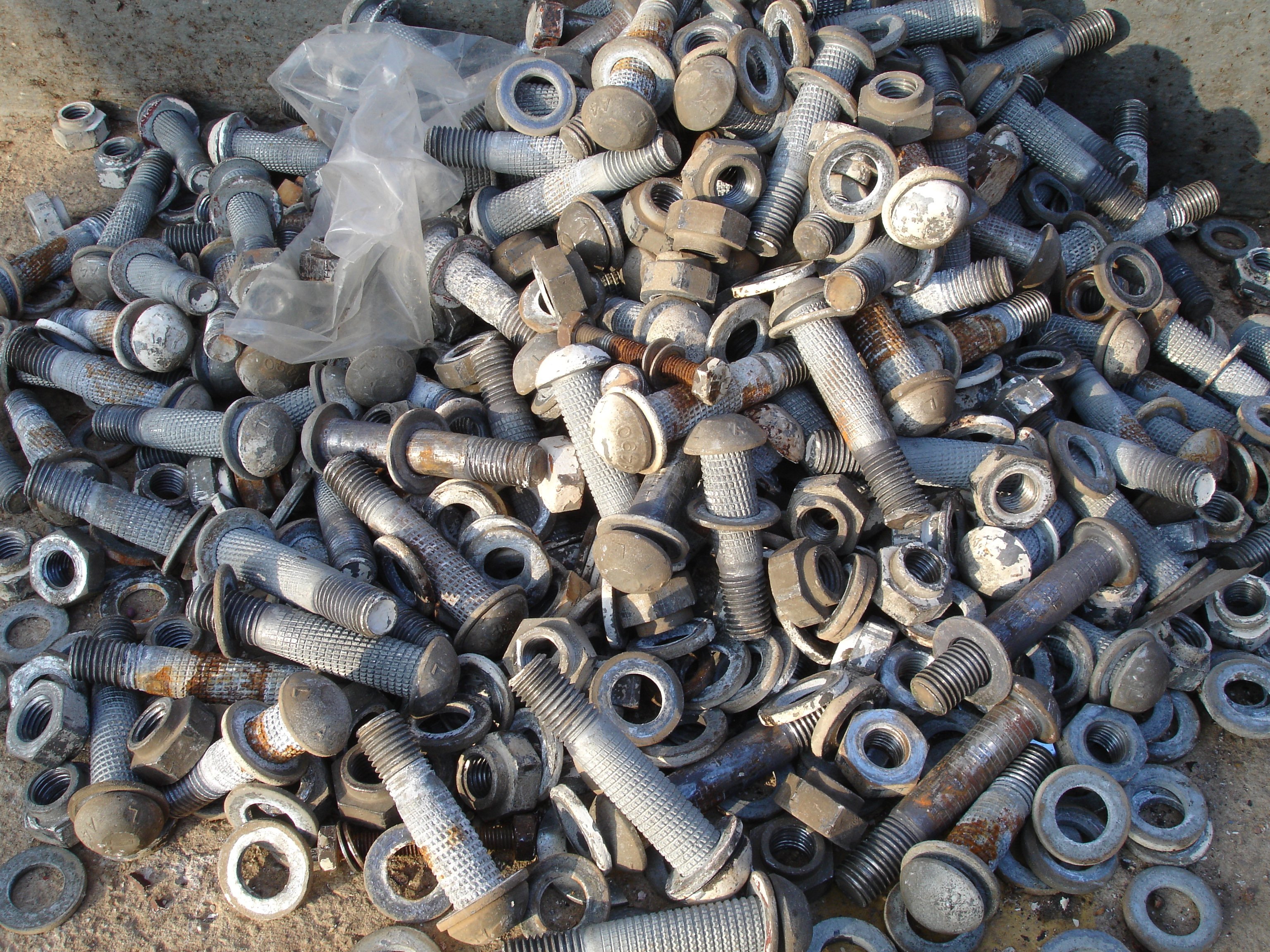
Left click on image for large version.
2010-07-01 Bolts that used to hold the telescope together
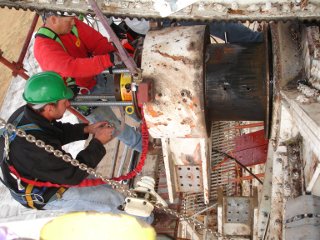
Left click on image for large version.
2010-07-02 The polar shaft South end cap is off! 200 tons of force was
required from the hydraulic jack to shift it, after 49 years in place.
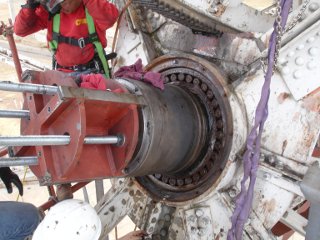
Left click on image for large version.
2010-07-02 The south polar shaft bearing exposed. Fragments of broken
bearing fall out.
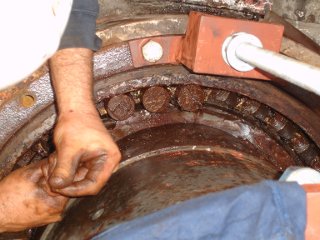
Left click on image for large version.
2010-07-02 Extracting rollers from the damaged inner race of the south
bearing.
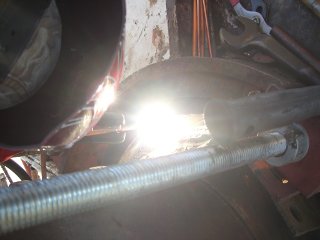
Left click on image for large version.
2010-07-06 Arc gouging being used to cut through inner bearings to get them
out.
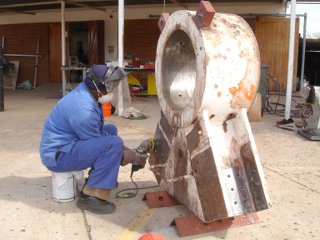
Left click on image for large version.
2010-07-13 HartRAO antenna technician Andrew Masiteng preparing the polar
shaft end cap for re-installation
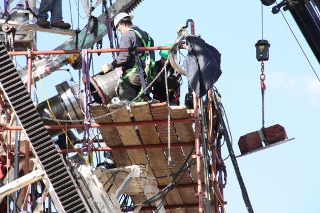
Left click on image for large version.
2010-07-14 The new bearing is on the end of the shaft and the pusher is
being installed
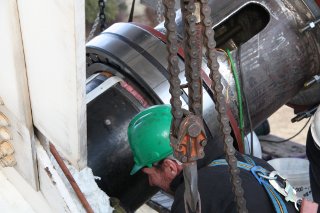
Left click on image for large version.
2010-07-14 Preparing to push the new bearing onto the shaft. Heating and
cooling (with liquid nitrogen) was used to cause differential expansion and
provide sufficient clearance to push the new bearing into place.
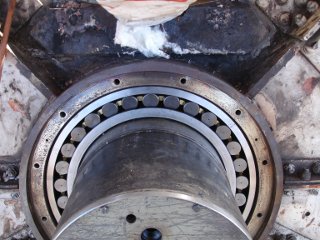
Left click on image for large version.
2010-07-15 The new bearing is in!
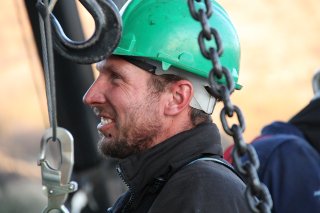
Left click on image for large version.
2010-07-14 HartRAO antenna specialist Pieter Stronkhorst is happy.
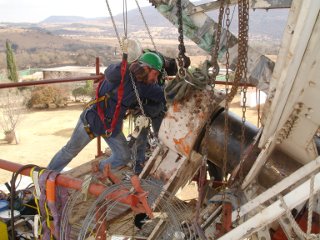
Left click on image for large version.
2010-07-15 The end cap is brought to the polar shaft for refitting
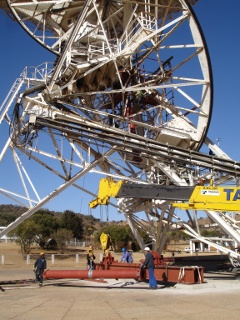
Left click on image for large version.
2010-07-16 The end cap is on, the splice plates have been bolted back on to rejoin
the end cap to the support legs, and the A-frame is being removed.
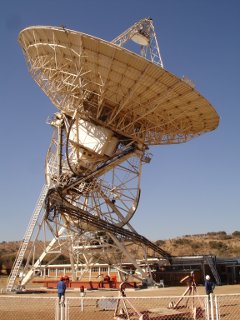
Left click on image for large version.
2010-07-20 The HartRAO 26m telescope drives for the first time with new
bearing, closely watched by technical staff
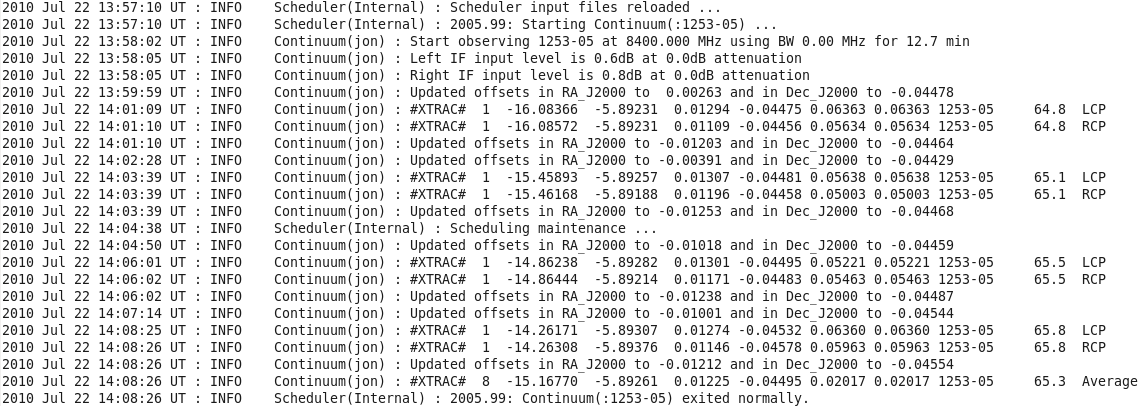
Left click on image for large version.
2010-07-22 Exactly one year after the decision by the President of the NRF to repair the
telescope, the first observation was carried out successfully. The
observing log is shown; the observation was to begin the process the
establishing a new pointing model for the telescope.
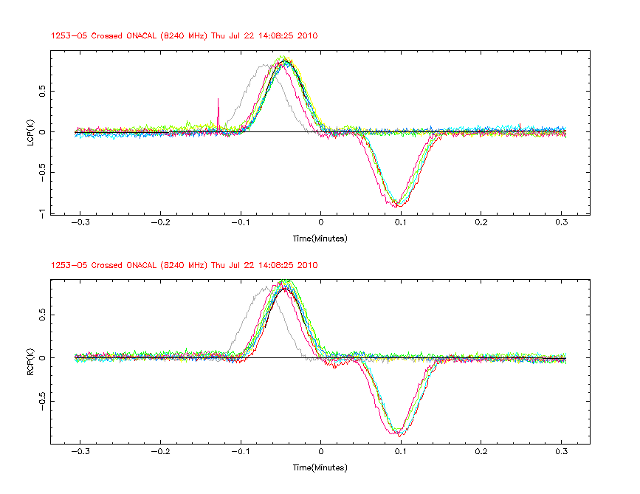
Left click on image for large version.
2010-07-22 Plot of the scans across radio galaxy 1253-05 in the first
observation after the repair. Multiple scans are plotted superimposed, as
the observing programme iteratively finds the pointing errors in this
direction. This receiver has two feeds alongside each other collecting the
signal. The software takes the difference between the two signals. This
causes the apparent "positive" and
"negative" radio sources in the scans - they are actually from the same
object. The upper plot shows left-circular polarization data, the lower
plot righ-circular polarization. The are recorded separately by the
receiver.
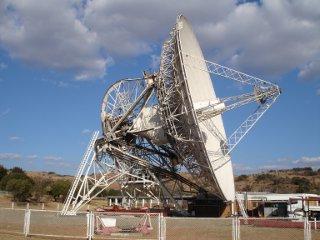
Left click on image for large version.
2010-07-22 Testing the West limit switches that prevent the antenna from
driving off the end of the gearwheel
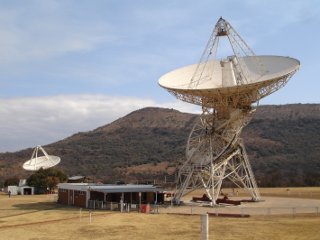
Left click on image for large version.
2010-07-23 The process of recommissioning all the receivers and data capture
system for different observing modes continued. Here the HartRAO 26m
telescope and the 15m XDM prototype for the Karoo Array Telescope are both observing
the Vela pulsar. This collapsed star undergoes sudden jumps in its rotation
rate, called 'glitches', every few years. After a wait of four years, it
glitched a few days after observing resumed with the 26m telescope.
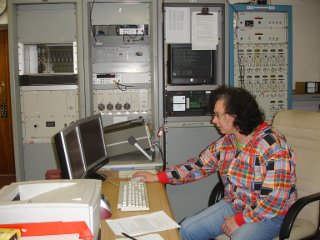
Left click on image for large version.
2010-07-28 A big milestone was resuming VLBI observing, working together
with radio telescopes on other continents. Here Marisa Nickola prepares for
the first VLBI.
The first post-repair VLBI was a 24-hour astrometric experiment named CRF60. It was undertaken on 2010 August 11. In this experiment the (ex-NASA) HartRAO 26m telescope combined with the University of Tasmania 26m telescope (also ex-NASA) at Mount Pleasant near Hobart and NASA's DSS-45 34m antenna at Tidbinbilla near Canberra. CRF60 is one of a continuing series astrometric VLBIs run by the International VLBI Service for Astrometry and Geodesy (IVS) aimed at establishing, maintaining and improving the International Celestial Reference Frame in the Southern Hemisphere. The ICRF provides the framework for astronomers to accurately locate other celestial objects.
A timelapse movie of the repaired telescope in action can be seen here, courtesy of "Carolune".